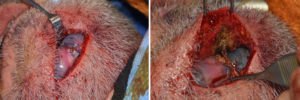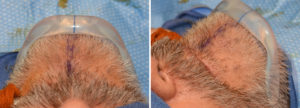The chin has few topographic features on an otherwise round convex shape as it covers the projecting chin bone. Chins can have either a dimple or cleft. A chin dimple is a circular central indentation of the soft tissue chin pad. A chin cleft is a vertical indentation through the lower half of the chin pad that extends to the inferior border. While many perceive that these chin indentations are caused by the bone underneath them (particularly a vertical cleft), they are actually anomalies in the soft tissue and not the bone.
The vertical chin cleft is the easiest to understand since the lower jaw is formed by the paired brachial arches that meet in the middle in the embryo. Failure to have a complete meeting in the middle can result in a ‘cleft’ of the overlying soft tissues. Or more likely the union of the tissues developed a very slight separation that resulted in a very minor soft tissue cleft.
When surgically trying to make a chin cleft, making a vertical defect in the bone alone will not work. Or in the case of placing a chin implant, a ‘cleft’ chin implant will also not create the desired effect. It requires soft tissue manipulation, preferably from a submental incision, to make an effective external cleft appearance.

A vertical chin cleft can also be created in patients who are not undergoing chin implant augmentation. The technique is the same with the exception that a vertical groove is made into the lower edge of the bone as opposed to that of an implant.
Dr. Barry Eppley
Indianapolis, Indiana



